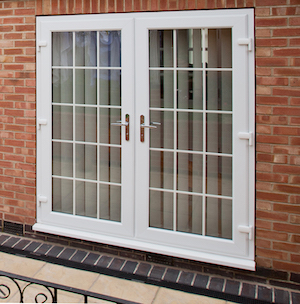french-door-damage9844
french-door-damage9844
French Door Adjustment 101″The Complete” Guide For Beginners
A Comprehensive Guide to French Door Adjustment: Ensuring Functionality and Aesthetic Appeal
French doors have long been a beloved choice for homeowners seeking elegance and performance for their home. Defined by their big panes of glass and the ability to open completely, French doors can change a room by welcoming natural light and creating a smooth connection in between indoor and outside environments. However, like any other door, they might need modifications in time to preserve their optimum efficiency. This short article will delve into the subtleties of French door adjustment, exploring why changes are needed, how to perform them, and addressing common concerns on the subject.
Understanding French Door Mechanics
French doors normally consist of two panels that swing open from the center. They may have different locking systems, hinges, and frame configurations, which all contribute in their overall performance. Here are some common components involved:
- Hinges: These are critical for swinging the door open and closed, and they must be properly aligned to ensure smooth motion.
- Locks and Latches: Mismatched locks can lead to security issues and impact functionality.
- Threshold: The bottom part of the door frame can become unequal, causing spaces and drafts.
Why French Door Adjustment is Necessary
With time, French doors can experience misalignment due to:
- Settling of your home: Homes naturally settle, triggering frame adjustments which can misalign doors.
- Humidity and Temperature Changes: Wood doors can swell or shrink with humidity and temperature fluctuations.
- Use and Tear: Regular use in time can cause loose hinges or unequal limits.
Appropriate adjustment of French doors is necessary to keep not only their visual appeal but likewise their performance.
How to Adjust French Doors
Changing French doors includes a number of steps and may vary slightly depending on the specific setup. However, the following basic treatment applies commonly to most French door setups.
Step-by-Step Adjustment
- Examination: Begin by inspecting the hinges, frame, and threshold for noticeable spaces or misalignments.
- Collect Tools: You will require:
- Screwdriver
- Level
- Shims (if required)
- Allen wrench (if hinges are adjustable)
- Adjust the Hinges:
- Loosen the screws on the hinges slightly.
- Utilizing an Allen wrench, change the hinge screws (if relevant) to raise or reduce the french-style door Fix panel till it lines up properly.
- Tighten up the screws back after adjustment.
- Check the Alignment: Use a level along the door’s edge to guarantee it stands straight. Adjust as required.
- Adjust the Threshold: If gaps continue at the bottom, use shims under the threshold or adjust it according to manufacturer directions.
- Evaluate the Locking Mechanism: Ensure that the doors lock firmly into place without forcing them.
- Final Inspection: Check for any draft or misalignment after modifications and right if required.
Maintenance Tips
- Routinely examine hinges and locks for wear and tear.
- Clean hinges with a lube to lower friction.
- Inspect weather removing and change it if it shows substantial signs of wear.
When to Seek Professional Help
While numerous homeowners can attend to minor adjustments separately, some scenarios necessitate professional consultation:
- Complex issues related to structural problems within the home.
- Severe misalignment triggered by extended wear, necessitating replacement of hinges.
- Problems with lock systems that require specialized tools and proficiency.
Common FAQs About French Door Adjustments
1. How typically should I adjust my French doors?Adjustments must
be made as required. A seasonal check is suggested to guarantee optimum performance, specifically after significant weather condition changes. 2. What tools do I need for adjustment?Basic tools consist of
a screwdriver, level, Allen wrench, and shims for
supporting uneven limits. 3. Why is my French door sticking?Sticking may arise from humidity causing the door to swell or from
misaligned hinges. Inspect for grooves and change as required. 4. Can I change French doors myself?Yes, with fundamental tools and a little understanding of the elements, many homeowners can manage simple adjustments.
5. What if my French doors will not close properly?This can suggest major misalignment or harmed hardware. Evaluate the situation and think about professional aid if it can not be solved with easy changes. French doors can substantially improve the aesthetic and functional qualities of a home. Though they might need occasional adjustments due to different elements such as settling, humidity, and regular usage, a couple of simple actions can
restore their efficiency. Regular inspections and proactive maintenance can prolong the life-span of French doors, permitting house owners to enjoy their appeal and energy for several years to come. Eventually, a well-adjusted set of French doors not only serves practical purposes but likewise adds to the total beauty of any area. Summary Table: Key Points for French Door Adjustment Element Description Components Hinges, locks, latches, threshold Common Issues Misalignment, sticking, gaps Tools Needed Screwdriver, level, Allen wrench, shims Adjustment Steps Check, change

